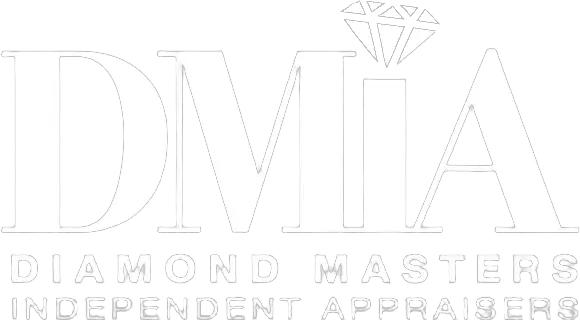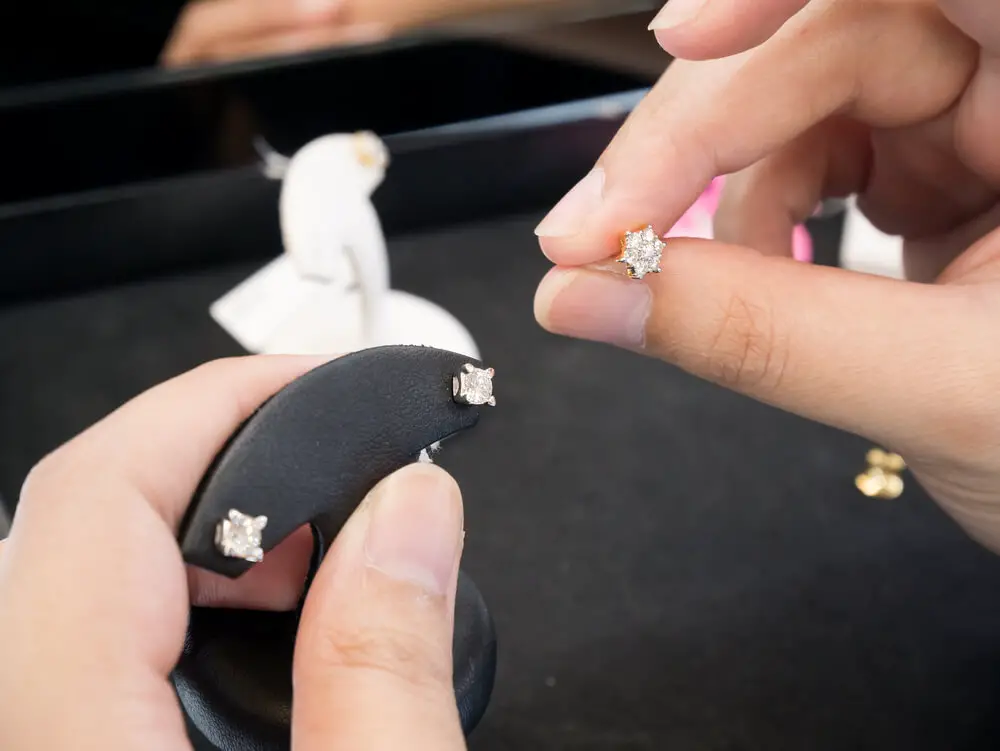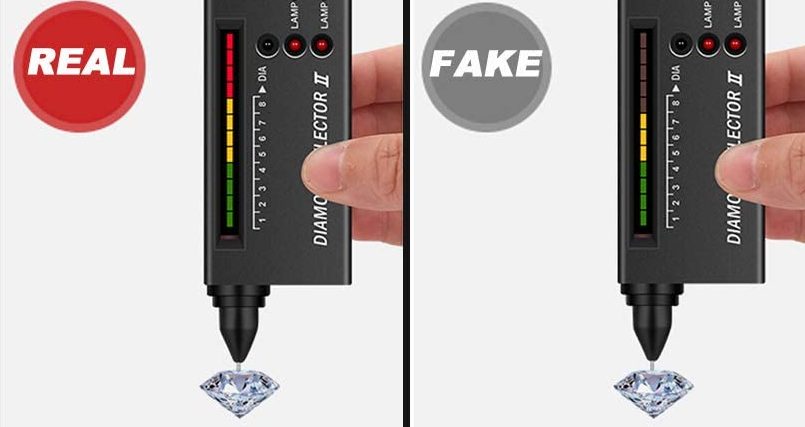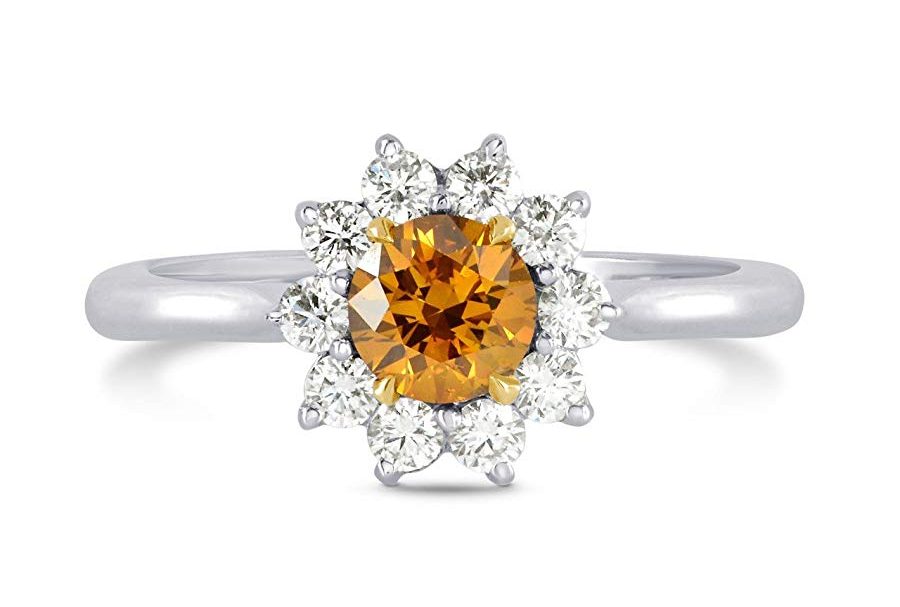Understanding CTTW Diamonds: Guide to Diamond Weight in Jewelry
Your friendly neighborhood diamond consultant is here to give you the rundown on CTTW, or carat total weight.
Now you might be ready to think about diamond engagement rings but, it’s never too early to start learning about the four C’s – cut, color, clarity, and carat. These are your best friends when it comes to finding the perfect ring.
Now, carat is a good place to start, but it can be a little confusing. And how is it different from carat total weight?
Carat Weight versus Total Carat Weight
A carat is a unit of measurement used to measure the weight of a SINGLE diamond. It is abbreviated as “ct.” One carat equals 0.2 grams, or about the weight of a paperclip.
CTTW, or carats total weight, is a term that is used to describe the combined weight of MULTIPLE diamonds in a piece of jewelry, such as an engagement ring. For example, if an engagement ring has a center diamond that weighs 1 carat and two side diamonds that each weigh 0.25 carats, the CTTW would be 1.50 carats.
Just know that when you’re looking at a ring with multiple diamonds, the weight of all those diamonds added together is called CTTW.
The Facts about CTTW…
CTTW only applies to diamonds.
CTTW stands for “carat total weight,” and CTTW only matters for diamonds. So if you’re into rubies or any of that other fancy stuff, CTTW doesn’t apply. Fun fact, diamond simulants like lab-grown diamonds, use CTTW as well.
CTTW only tells you the total weight, not size.
CTTW doesn’t really tell you much about the size of a ring. I know, I know, it sounds weird. But it’s true! You can have two rings with the same CTTW, but one could appear much bigger than the other. It all depends on how much of the CTTW comes from the center stone and how much comes from the accent stones.
Let’s say you have a ring with ten small stones with a center 2 carat stone, and then another ring with just a 2 carat center stone diamond and two large baguette diamonds. The second ring is probably going to look a lot larger than the first one, even though they have the same CTTW.
Divide CTTW by two for Earrings
If you’re buying earrings, remember to divide the CTTW in half to get the carat weight of the stones on each earring. Some people think the CTTW is per earring – don’t be that person. If a set of earrings says it’s 1 CTTW, then each earring is .50 carats. And if you don’t see a breakdown of all the stones in a piece, just ask!
Let’s Review
Were you paying attention? Let see if you learned anything…
What is the meaning of CTTW? CTTW stands for carat total weight. It’s a measure of the weight of all the diamonds combined together in a piece of jewelry.
How does Diamond CTTW work? If you have just one diamond, we measure the weight in carats. But if have more than one diamond, like on a necklace or a ring, we measure the weight of all the diamonds together to arrive at the total carat weight. You may also see it represented as CTW or TW.
Do you measure the metal with CTTW? CTTW is just for diamonds. For metal, like gold for example, we use troy ounces to measure the weight. And if you’re talking about pure gold, we use something called “caratage” to measure the purity. But that is a whole different subject.
Do you measure the weight of lab-grown diamonds in CTTW? Yep, even lab grown diamonds are measured in CTTW. I know, I know, you’re probably thinking, ‘Who cares about some boring weight measurement?’ But trust me, it’s actually pretty important when it comes to buying fancy jewelry
Common Misconceptions about CTTW
As a consultant, I’ve come across a lot of misconceptions about CTTW that I want to clear up for all of you
First off, CTTW stands for carat total weight, which is the total weight of all the diamonds in a piece of jewelry. It’s important to know about CTTW because it can affect the size and overall appearance of the piece.
Misconception #1: CTTW only refers to real diamonds
One common misconception about CTTW is that it only refers to real diamonds. This is not true! CTTW is a measure of weight, not authenticity, so it applies to both real and lab-grown diamonds.
Misconception #2: CTTW is the only factor that determines price
Another misconception is that CTTW is the only factor that determines the price of a piece of jewelry. While CTTW is important, it’s not the only thing that affects price. The size and quality of the diamonds also also impact the cost.
Misconception #3: CTTW is the same as carat weight
Some people also think that CTTW is the same as carat weight, which is only the weight of a single diamond. This is not the case. CTTW is the total weight of all the diamonds in a piece, not just one.
People also ask
When buying a diamond engagement ring, clients have also asked me…
What does 1/4 ct tw mean? When we talk about a 1/4 carat, we mean that the diamond or stone is 0.25 carats in weight. But when we add the ‘tw’ at the end, it stands for ‘total weight’ and it means that the diamond or stone is part of a set or group, and the total weight of all the stones together is 0.25 carats.
what is 1/6 ct tw diamond? 1/6 ct tw diamond refers to a diamond that is part of a set or group of diamonds, and the total weight of all the diamonds together is 0.16 carats.
what does 5/8 ct tw mean? 5/8 ct tw refers to a set or group of diamonds with a total weight of 0.63 carats. The “5/8” refers to the fraction of a carat, and the “ct tw” stands for “carat total weight.”
What does 1/5 ct tw diamond mean? 1/5 ct tw diamond refers to a diamond that is part of a set or group of diamonds, and the total weight of all the diamonds together is 0.20 carats. The “1/5” refers to the fraction of a carat, and the “ct tw” stands for “carat total weight.”
What does 7/8 ct tw diamond mean? 7/8 ct tw diamond refers to a set or group of diamonds with a total weight of 0.88 carats. The “7/8” refers to the fraction of a carat, and the “ct tw” stands for “carat total weight.”
I’ve seen some CTTWs say “genuine diamond”, what’s that mean? “cttw genuine diamond” refers to a set or group of diamonds that are genuine, meaning they are real and not synthetic or imitation. The “cttw” stands for “carat total weight,” which refers to the total weight of all the diamonds in the set or group.
How do I know if a ring has a high CTTW value? Is there a standard or guideline that I should follow?
It’s all about the weight of the diamonds in the ring. The higher the CTTW, the more diamonds there are, and the more diamonds there are, the higher the CTTW value.
How does CTTW affect the appearance or quality of the ring? Is a higher CTTW value always better, or are there trade-offs to consider?
A higher CTTW value usually means that the ring will have more diamonds and therefore appear sparklier and more impressive.
But, is a higher CTTW value always better? Not necessarily. There are trade-offs to consider, such as the size of the diamonds and their individual quality.
A ring with a high CTTW value and tiny, low-quality diamonds might not look as good as a ring with a lower CTTW value but larger, higher-quality diamonds.
How does CTTW compare to other factors, such as cut, color, and clarity, when it comes to determining the value or attractiveness of a ring?
These factors are all important when it comes to determining the value and attractiveness of a diamond, but CTTW is often the most noticeable. A ring with a high CTTW value will usually catch people’s attention more than a ring with a lower CTTW value, even if the latter has better cut, color, and clarity.
That’s not to say that these other factors aren’t important, but CTTW can definitely be a determining factor for some people.
How does CTTW affect the price of a ring, and how can I determine if I’m getting a good value for my money?
The more diamonds a ring has, the higher the price. A ring with a high CTTW value will usually cost more than a ring with a lower CTTW value, all other factors being equal.
But how can you determine if you’re getting a good value for your money? It’s all about finding the right balance between CTTW and other factors like cut, color, and clarity.
A ring with a high CTTW value and poor quality diamonds might not be a good value, whereas a ring with a lower CTTW value but high-quality diamonds could be a better value.
How can I compare CTTW values between different rings or retailers, and what factors should I consider when making a decision?
It’s all about doing your research and all the factors that go into the value of a diamond. Look at the size and quality of the diamonds, as well as the cut, color, and clarity.
Are there any tips or strategies for maximizing CTTW within a given budget, or for finding the best balance between CTTW and other factors?
My biggest tip would be to shop around and compare different retailers. Don’t just go with the first place you see. And don’t be afraid to negotiate or ask for discounts.
It’s not always about getting the highest CTTW value. It’s about finding the right balance between CTTW and the other factors that go into the value of a diamond.
What questions do you have?
My DMIA team of expert gemologists (AKA fancy diamond experts) are here to help you find the perfect ring for any budget. So if you have any questions or just want some guidance on this crazy journey called love, don’t hesitate to reach out to us.



